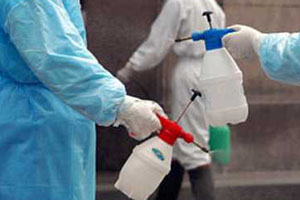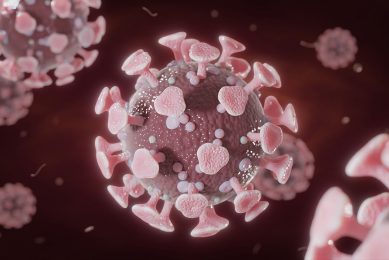Coordinating disinfection at breeder farm and hatchery

It is common practice for hatcheries to receive hatching eggs from more than one breeder farm or supplier. This guarantees a continuous flow of hatching eggs to the hatchery, to ensure that there is no interruption to the delivery of day old chicks. However, the practice of incubating eggs from different sources increases the risk of bacterial or fungal cross contamination between different batches of eggs.
With hatcheries growing larger, the number of suppliers or breeder farms delivering hatching eggs to one specific hatchery also rises, further increasing this risk of cross contamination. For this reason, it is not unusual for hatching eggs to be disinfected at the breeder farm, or even during transport from the farm, before the eggs reach the hatchery.
Optimised disinfection at the breeder farm preserves the quality of the eggs and the embryos. Improper disinfection at the breeder farm is, however, likely to be one potential reason for embryonic mortality during the first 48 h of incubation.
The main, critical issue relating to disinfection on the breeder farm is the temperature of the eggs at the moment of disinfection. The temperature of the egg on laying is 40°C, but this drops immediately when the egg leaves the hen’s body. Some disinfectants, especially formalin, can diffuse into the egg during cooling, which may kill the embryo. To avoid early mortality, the eggs need to be cooled down to 20-25°C before disinfection. This may take between 4-6 hours, depending on conditions in the farm house.
The rate of cooling depends on temperature in the nest; the transporting belts and in the room where freshly laid eggs are sorted and prepared for disinfection and transport to the hatchery. The type of egg trays and/or boxes used to pack the eggs also has an influence on the rate of cooling.
Paper trays and boxes are good isolators and slow down the cooling rate of the eggs, whereas open plastic or setter trays facilitate cooling. “Open” trays are recommended for disinfection at the farm, as they allow for good, all-over coverage of the surface of the eggs with disinfectant.
Hatchery managers are keen to standardize the protocols for egg disinfection at the hatchery. These protocols should be translated to and communicated with the breeder farm manager, with the aim of achieving a consistent, standardised approach to disinfection that will lead to improved results for both the farm and the hatchery.
Source: Pas Reform













